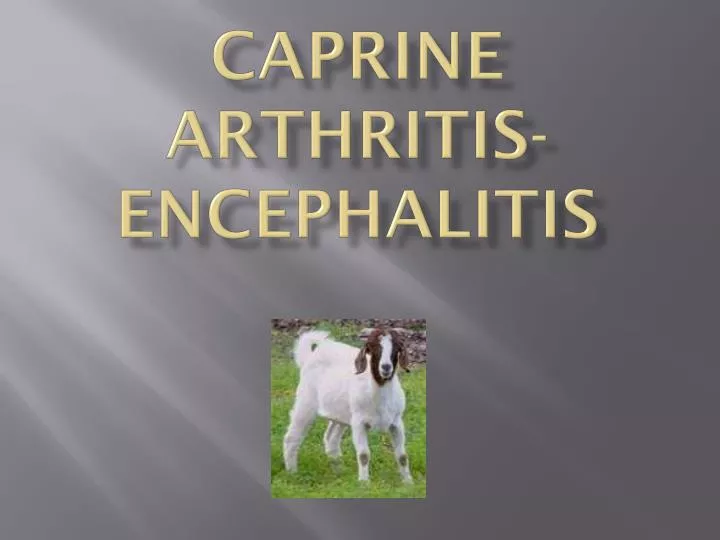

What Causes Caprine Arthritis Encephalitis? Milk, saliva, or mucous, as well as coughing, can be used to spread CAE. Although symptoms typically appear around the age of two, they can appear in adulthood at any time. If your goats show signs of Caprine Arthritis Encephalitis (CAE), they should be evaluated by a veterinarian. Because there is no known treatment for CAE, prevention is the best way to reduce its impact on your farm. You may also experience milk production loss due to CAE. It causes progressive, crippling, and debilitating symptoms. Early diagnosis and treatment is essential for the best possible outcome.Ĭaprine arthritis is an contagious disease that affects goats in Ontario. If you think you or someone you know may have encephalitis, it is important to seek medical help immediately. Encephalitis is a serious and potentially fatal illness. The virus can also be spread through sexual contact. HSV infection can occur through contact with an infected person’s saliva, mucus, or blood. While encephalitis can be caused by a number of different viruses, HSV is one of the most common causes. In severe cases, encephalitis can lead to coma and death. Other symptoms may include fever, confusion, seizures, and paralysis.

The most common symptom is a headache, which can be severe. Encephalitis can cause a wide range of symptoms, from mild to severe. In most cases, encephalitis is caused by a virus, such as HSV. Encephalitis is a serious and potentially fatal inflammation of the brain. While most people who are infected with HSV will never experience any symptoms, the virus can sometimes cause a condition called encephalitis. HSV infection can cause a wide range of symptoms, from mild to severe, and can even be fatal. While there are many different causes of encephalitis, one of the most common is infection with the herpes simplex virus (HSV). To prevent spread of the disease, infected animals are separated from non-infected goats, or culled.Encephalitis is a serious and potentially life-threatening inflammation of the brain. Blood testing goats for CAE virus before moving them into a new herd will prevent the spread of the disease.

The disease can be spread from goat to goat via direct contact and body fluids, such as saliva. Separating goat kids from infected goats, and feeding the kids with cow's milk, or pasteurized goat milk, will prevent infection. The disease is spread to goat kids when they drink colostrum or milk from infected goats. The goat has increased difficulty standing and eventually is unable to stand. The goat will be uncoordinated, and unable to place its feet properly, so that it "knuckles", that is, it stands with the front of its fetlock on the ground, rather than its hoof. In goats which develop the neurological form of the disease, the onset of signs is gradual over several weeks. In some cases the goat will not be able to stand. In goats which develop arthritis, the joints become inflamed and swollen, and the goats will slowly lose condition. The reason for the long (and variable) period of dormancy of the virus is not known. Infection is life-long, and it may be years before signs of the disease occur. Less commonly, mastitis or pneumonia may occur. Adult goats develop a chronic progressive arthritis, whereas young goats develop a neurological syndrome, with signs of paresis or paralysis. Caprine arthritis encephalitis (CAE) is a viral disease of goats caused by a lentivirus called caprine arthritis encephalitis virus.


 0 kommentar(er)
0 kommentar(er)
